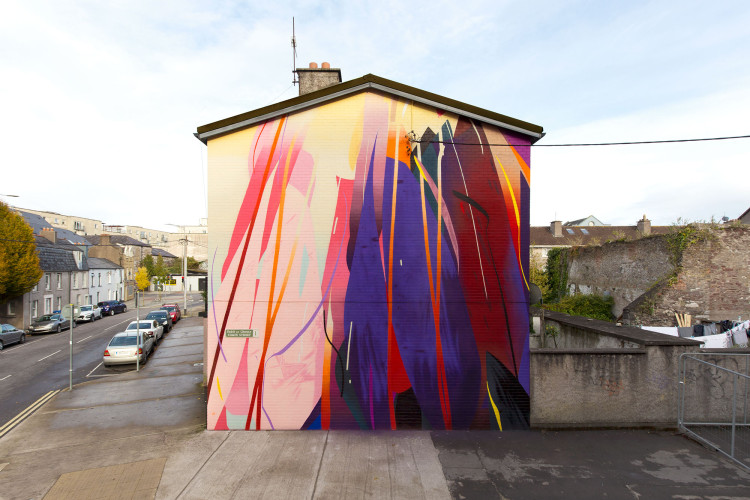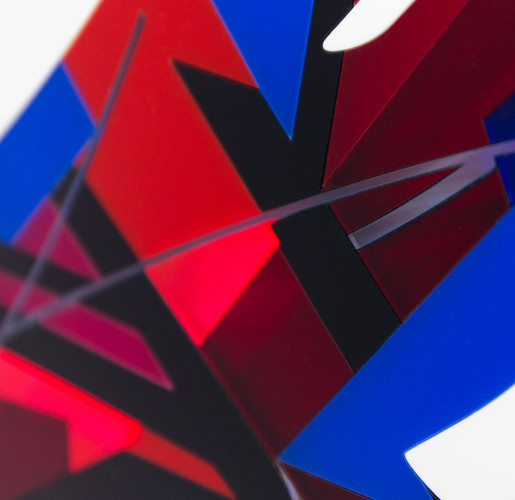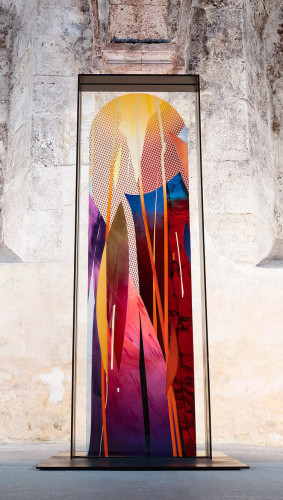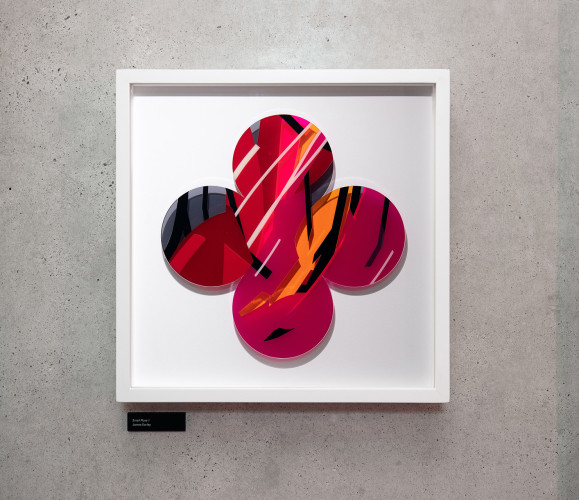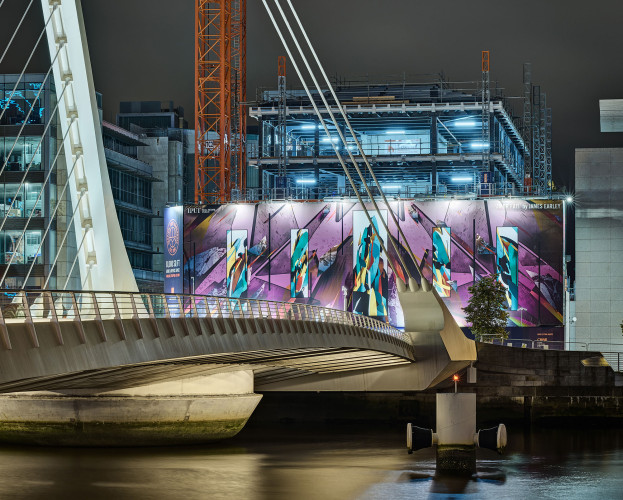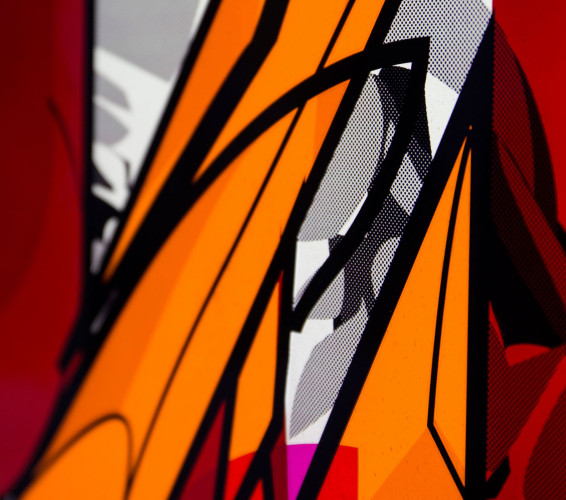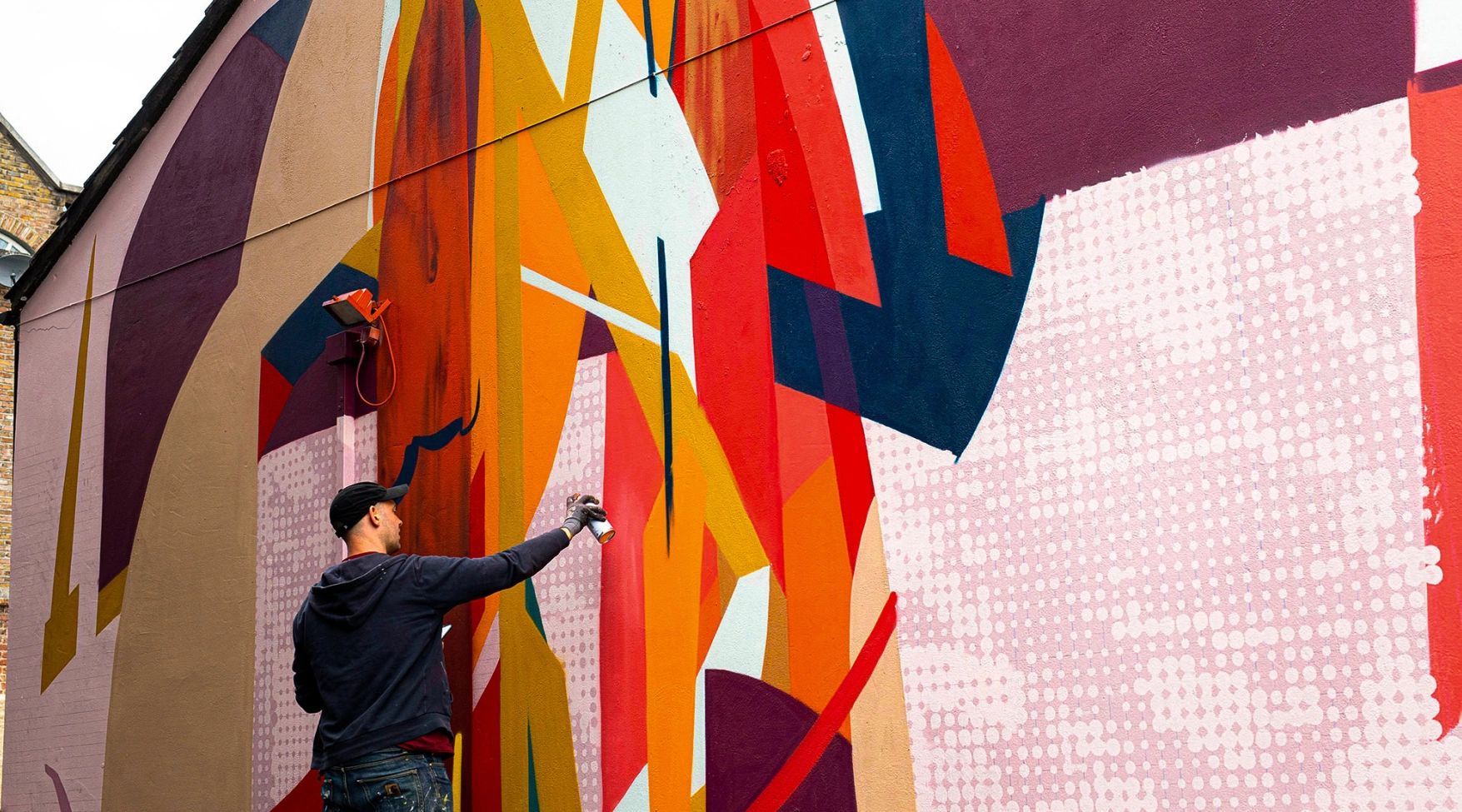
James Earley
James Earley is an Irish artist who lives and works in Dublin, Ireland. Earley’s practice is rooted in graffiti, graphic design and his family’s heritage in stained glass. He creates artworks that are timeless in their aesthetic and rich in their conceptual narrative.
The pieces are produced using digital tools to create analogue artworks. Fusing computer-aided fabrication with traditional hand-made techniques, he embraces technology to create complex, layered, highly charged compositions. Earley’s principle aesthetic focus is to visualise deconstructed stained glass windows, where the architectural forms of the window (lead, glass) hang in suspended tension, depicted through a graphic language of line, colour and halftone forms.
Earley’s work deals with wide ranging themes of power, societal imbalances, religion, politics and ultimately, the inhumanity of man. His artworks are a visual meditation and reflection of these themes.
-
What is your job?
+I am a multi-disciplinary visual artist. I create a mix of large scale public artworks aswell as smaller, more intimate studio works.
-
When did you know you wanted art to be your job?
+Around 15/16 years old.
-
Did you attend art college and if so what was the experience like?
+I went to NCAD and had an amazing time. Couldn’t believe there were so many people in one place that were working on so many different facets of art. It really opened my mind up to how broad art is and what it can be.
-
What is the job of art (or of artists?)
+To make us question the world around us.
-
What is art to you?
+Aside from my family and friends its the most important thing in my life. It’s what grounds me and gives me a sense of purpose. It is an extension of who I am and what I value in life.
-
Why is art important?
+It promotes free thinking and imagination. I feel that both of these things are core to society as a whole.
-
Do you have a favourite type of art?
+Hard to say. I am an absolute sucker for multi-disciplinarian artists. I love seeing artists that embrace different materials and cross pollinate art disciplines. Concept driven work with a focus on colour, composition, materiality and scale ticks all my boxes! Understandably, I have a strong interest in stained glass, some of myfavourite work comes from German Stained Glass artists from the 50s, 60s and 70s. Gerhard Richter’s stained glass windows in Cologne Cathedral are a great example of some more recent, contemporary German stained glass.
-
What inspires you and your art?
+I take inspiration from many things and really depends on the type of art I am creating. In the case of studio works, I mainly draw from my environment, life experiences and current affairs. With larger, public works which are site specific, I let my research of the space and the project lead the way. I spend a lot of time on this, building a conceptual base to the work. When it comes to the visual elements they tend to flow and come together in a pretty organised fashion. I have a very techy and inquisitive mind, so materials, processes and fabrication are of great interest to me. I love working with new techniques or trying to push different media/ processes into new and unchartered territories.
-
Do you have a creative philosophy?
+Be true to your own practice and try to create work you haven’t seen or experienced before.
-
What advice do you have for young artists?
+Do what makes you happiest and remain open to lots of ideas. Also when thinking about goals, try to think long term and not short term /immediate gratification.
-
What advice would you give your teenage self?
+Pluck up the courage to talk to artists older than you for advice. It’s the fastest way you will learn and most will always want to take the time to help up and coming younger artists.
-
What is glass like to work with as a material?
+It is a mass of contradictions! It can be fragile yet remarkably tough, depending on its pigmentation can be bright but also dull and its visual clarity can be clear or highly textured and so on. Above all its constantly full of surprises and has so many creative possibilities you will never become bored with it in a lifetime. Actually, I think this same idea translates into ones practice as well. If you have an energeticand inquisitive mind, art will always excite you and continually keep your attentionand creative passion alight. My grandmother was a great example of this, she was still painting into her 90s!
